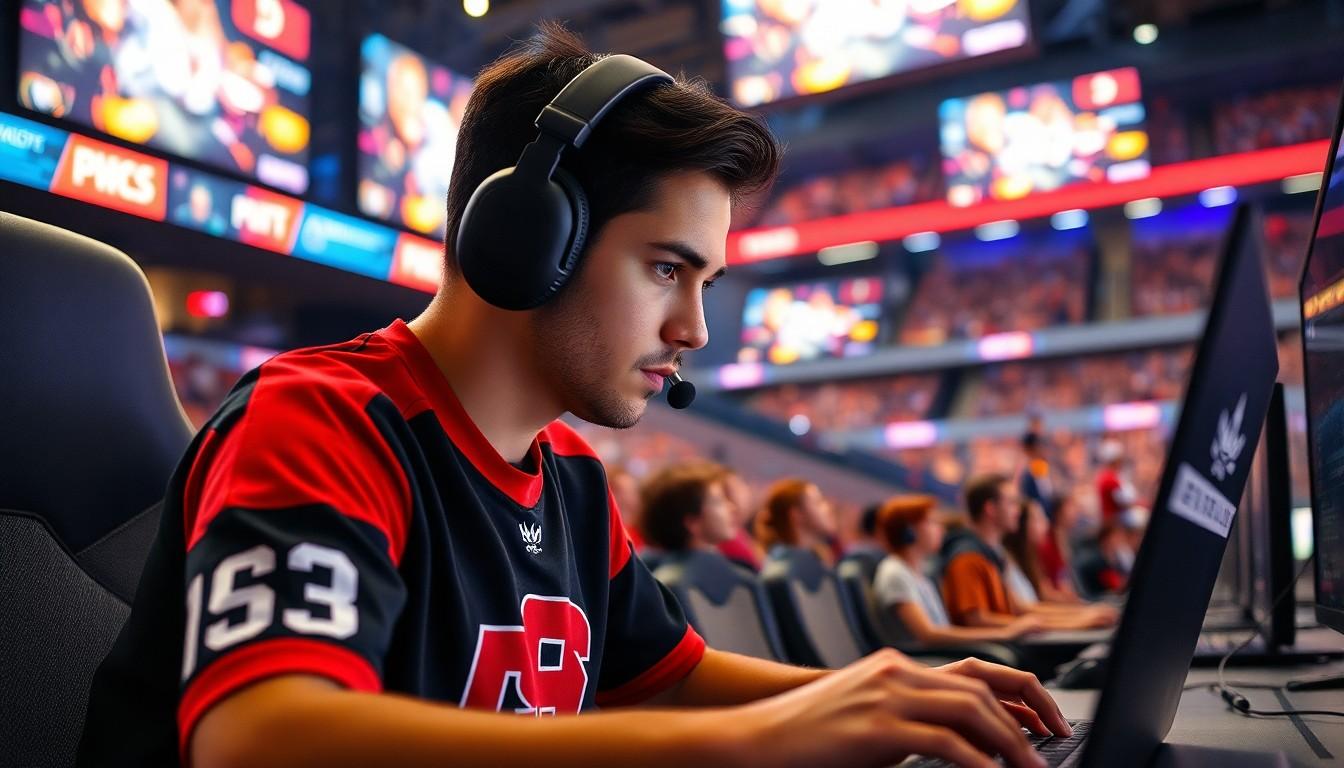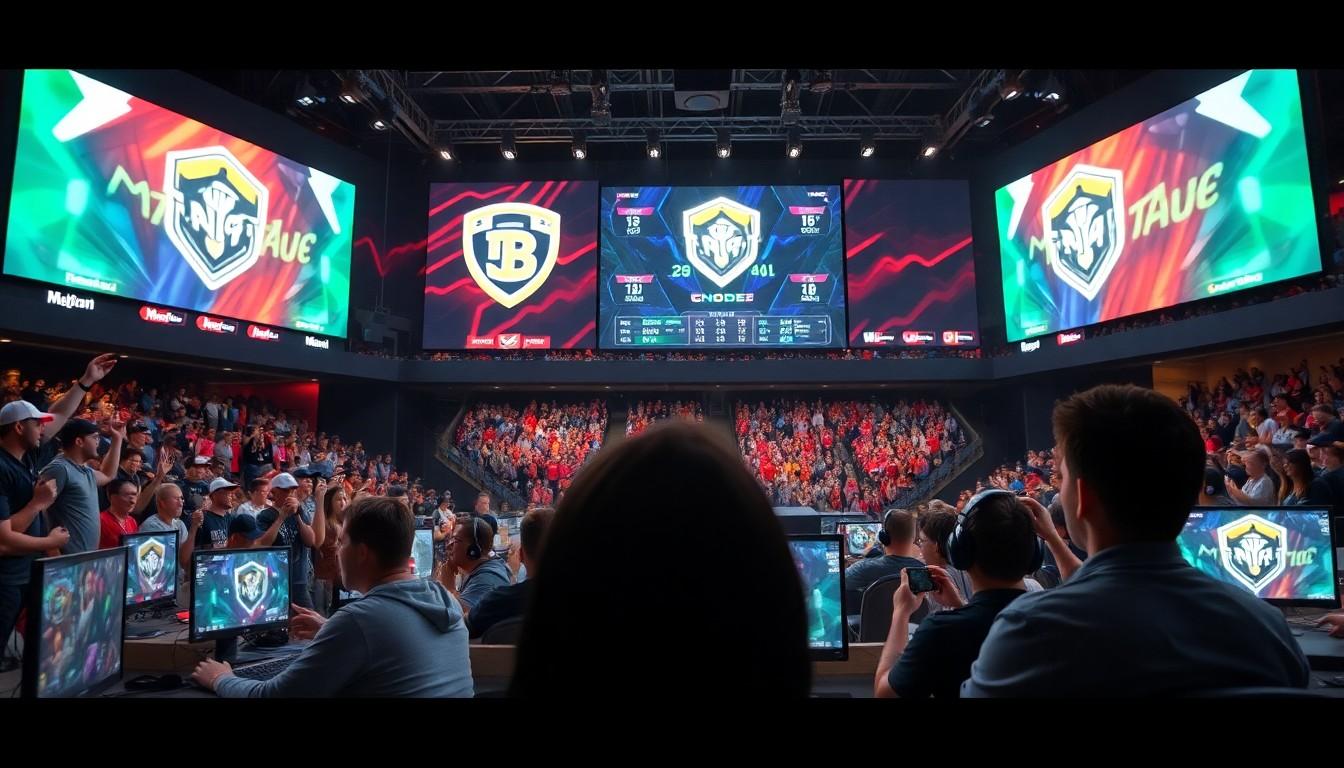Phone:
(701)814-6992
Physical address:
6296 Donnelly Plaza
Ratkeville, Bahamas.

In the fast-paced world of League of Legends esports, stats aren’t just numbers—they’re the lifeblood of every team’s strategy. From kill-death ratios to tower dives, these figures tell a story that can make or break a match. Whether you’re a die-hard fan or a curious newbie, understanding these stats can elevate your viewing experience from casual observer to expert analyst.
Statistics play a vital role in League of Legends esports, as they provide insights into team performance. Metrics like win rates, average game time, and gold per minute illuminate how teams effectively execute strategies and adapt during matches. Kill-death ratios reflect individual player performance, while objective control percentages highlight a team’s ability to secure crucial in-game objectives.
Comparative analyses of team stats allow for greater understanding of strengths and weaknesses. For example, a team with a high dragon control percentage often demonstrates superior map awareness and coordination. Furthermore, the efficacy of communication within a team can be inferred from metrics such as average deaths per game and champion selection trends.
Data from tournament performances reveal top-performing teams over the season. Statistics show that international tournaments heighten the significance of consistent gameplay, where elite teams maintain dominance through strategic mastery. When examining champions selected in matches, one may note the impact of patch changes on team strategies.
Historical data provides context for current trends, allowing analysts and fans to identify emerging playstyles. Regular season stats reflect volatility, indicating how peak performances differ across patches and competitive environments. Positioning, drafting, and synergy statistics serve as essential tools for coaches to refine their team dynamics.
By analyzing this wealth of data, both fans and professionals gain an appreciation for the strategic depth of League of Legends. Consequently, a thorough understanding of team stats enhances the overall viewing experience, cultivating a richer connection with the game.

Understanding key metrics enhances insights into League of Legends esports teams. Several statistics significantly impact team performance and strategies.
Win rates reflect a team’s overall performance across matches. Metrics here indicate the percentage of games won compared to total games played. High win rates often suggest effective teamwork and strategy execution. For instance, a win rate above 60% generally indicates a strong competitive edge. Analyzing win rates over time helps identify trends in success or decline, allowing teams to adjust their tactics accordingly. Additionally, comparing win rates across different tournaments provides context for a team’s performance against varying levels of competition.
Player performance stats play a crucial role in determining individual contributions to team success. Metrics like kill-death ratios, assists, and farm rates illustrate how effectively players impact the game. A high kill-death ratio showcases a player’s fighting capabilities, while assists reflect their support for teammates. Farm rates, or the number of minions killed, directly influence gold acquisition, which translates into stronger items and abilities. Tracking these metrics helps teams assess player strengths and weaknesses, informing decisions on roster changes or role assignments. Evaluating consistency in these performances can indicate a player’s reliability under pressure.
Analyzing team performance is essential for understanding League of Legends esports dynamics. Two significant aspects include team roster analysis and historical performance trends.
Each team’s roster significantly impacts their overall performance. Player synergy influences communication and strategy execution. Top teams frequently showcase a mix of veteran players and emerging talents. Statistically, rosters with high kill-death ratios tend to excel in securing objectives, showcasing their effectiveness. Examining individual player contributions, such as farm rates and assists, can provide valuable insights into overall team strength. Balancing roles effectively enhances coordination and execution during crucial matches.
Historical data reveals critical insights into a team’s evolution over seasons. Consistent win rates reflect strategic adjustments and adaptability to the meta. Trends show that teams excelling in objective control often dominate tournaments. Moreover, identifying shifts in playstyle following major patches helps teams forecast competitive advantages. Analyzing past performances in major tournaments offers perspective on their potential in upcoming competitions. Players’ ability to learn from historical outcomes can also lead to improved future performance.
Coaching plays a critical role in shaping League of Legends esports teams. Experienced coaches implement strategies that highlight players’ strengths. They also provide valuable insights that enhance team communication and decision-making during matches. Coaches analyze team statistics to pinpoint areas needing improvement, ensuring optimal performance.
Metrics like objective control percentages often reflect the effectiveness of coaching methods. A skilled coach can help a team capitalize on opportunities, increasing their win rate. Strategies involving tower dives or jungle control can be directly attributed to the guidance of knowledgeable coaches.
Furthermore, coaching shapes player synergy within the team. Mixing veteran players with rising talents fosters a collaborative environment. Coaches often emphasize the importance of practicing together, leading to better coordination during high-pressure situations in tournaments. This preparation can significantly improve a team’s overall performance.
Historical performance trends also showcase the impact of effective coaching. Teams that adapt to evolving game metas tend to benefit from innovative strategies crafted by their coaching staff. Regular review of performance data helps coaches identify what works and what doesn’t, ultimately informing roster adjustments or role reassessments.
Coaching staff members contribute not just to tactics but also to the mental resilience of players. Maintaining a positive mindset often correlates with improved performances in competitions. Teams with supportive coaches frequently demonstrate enhanced focus and determination on the rift.
Overall, the influence of coaching extends beyond the statistics, shaping the identity and success of League of Legends esports teams. Understanding its impact emphasizes the importance of effective coaching in achieving competitive advantages.
Analyzing current trends in League of Legends esports, several predictions about team performance emerge. Teams with high kill-death ratios tend to excel, as this metric often correlates with objective control. The rise of new strategies can influence how teams approach gameplay, particularly with emerging talents pushing established players to adapt. Roster changes could bring about significant shifts in team dynamics, affecting communication and synergy.
Monitoring the impact of patch updates on gameplay provides valuable insights. Teams that quickly adapt to changes are likely to succeed, as evolving metas frequently dictate competitive advantages. Coaching’s role remains crucial; effective coaching can enhance teamwork and decision-making under pressure. Statistically, teams with strong coaching and player synergy often showcase improved gameplay in tournaments.
Player performances can serve as bellwethers for team success. Metrics like gold per minute and assists not only reflect individual contributions but also indicate how well players collaborate. Historical performance trends reveal that consistency is often linked with effective strategy execution. Teams that leverage data analytics to assess past performances can better predict outcomes and refine tactics for future matches.
Expect competition to intensify as teams invest in analytics and coaching. Organizations may prioritize hiring experienced staff to maximize player potential and team cohesion. Identifying emerging playstyles within the community can also give teams an edge over their opponents. Hence, adapting to evolving strategies and focusing on individual player strengths could determine success in upcoming tournaments.
The significance of statistics in League of Legends esports can’t be overstated. These metrics not only shape team strategies but also enhance the overall viewing experience. As teams evolve and adapt to the ever-changing game landscape, understanding key stats like win rates and kill-death ratios will remain essential.
Coaching plays a pivotal role in maximizing team potential and fostering synergy among players. As the competitive scene intensifies, organizations will likely continue investing in analytics and experienced coaching to gain an edge. The future of esports hinges on adaptability and the ability to leverage individual strengths, ensuring that teams stay ahead in this dynamic environment.